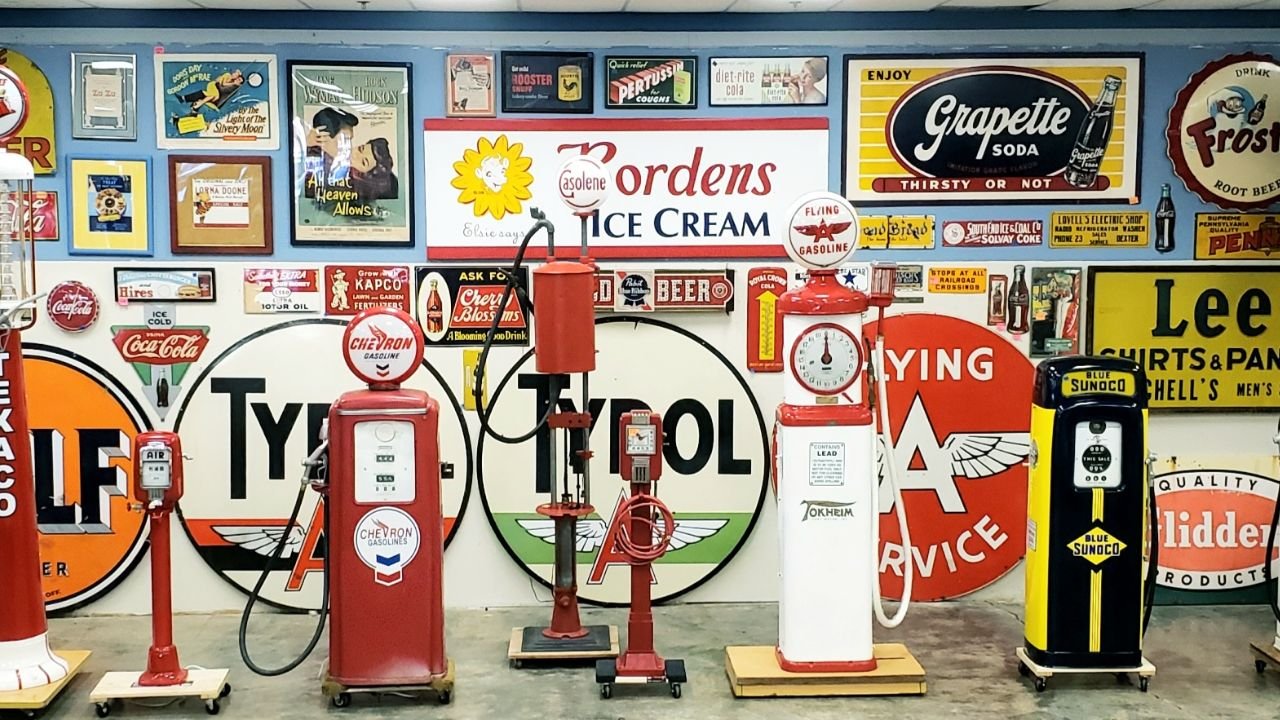Antique gas pumps function as concrete historical artifacts that preserve the original American culture from the past. These relics can be found at roadside stations which served as markers of both automotive technology’s development and American travel and commercial patterns. The growing reliance on cars during early to mid-20th century triggered the transformation of gas pumps into major visibility points while they adopted architectural trends and representation styles of their era. Modern collectors maintain these priceless American artifacts because they understand these objects as cultural touchstones which transmit tales of technological improvement together with social and motor exploration. This paper examines antique gas pumps starting from their historical background as well as documenting both restoration work done by enthusiasts and the cultural changes they have brought to American communities. These pumps instruct us about their dual function of powering vehicles while helping to mold the American lifestyle through their skilled design elements. Follow us through history to value the timeless allure of historic gas pumps which were once pervasive symbols of American culture before becoming significant artifacts in our communal heritage.
Importance of Antique Gas Pumps Preservation
The physical presence of antique gas pumps provides important historical connections which reveal the development of the automotive sector and social transformations during the entire 20th century. The preservation of antique gas pumps remains essential because artifacts document both historical facts and cultural legacies about innovative technology as well as business activities and everyday living. Through the protection of antique gas pumps our civilization continues to share its historical narrative about fuel distribution evolution that shaped transportation and commercial practices.
Antique gas pumps preserve their historical significance which boosts tourism and leads to increased attraction toward local historical landmarks. Historical gas pumps displayed across museums and vintage automobile shows and roadside attractions attract plenty of visitors who also understand the artistry and design principle of past periods. Antique gas pumps create colorful decorative elements through their distinct visual styles which become essential cultural features that promote community character and support local narratives about heritage. The conservation of antique gas pumps serves as a crucial effort because it both elevates cultural environments and strengthens regional storytelling.
Restoration Techniques for Antique Gas Pumps
Antique gas pumps need careful restoration which maintains original artistry and achieves operational safety conditions. The first step involves assessing all elements of the pump starting with mechanical components and moving through paint assessment and glass element evaluation. Generally technicians take apart the pump so they can conduct individual part repairs through methods involving sandblasting or chemical stripping to eliminate rust and old paint from contact with vital structures. When pumps exhibit advanced wear it becomes paramount to find original parts including glass globes and decals which preserve historical accuracy.
The reassembly starts with a comprehensive approach to return functionality followed by ensuring excellent aesthetic quality between components. A proper restoration method encompasses exterior painting with original colors while using protective treatments on surfaces to sustain future deterioration along with proper functioning of all movable parts. The documented restoration process improves the work’s integrity value while creating helpful information that future restorers and collectors can use. Through restoration practices antique gas pumps retain their historical identity as well as their role as torchvision pieces of automotive history.
The Guide to Buying Antique Gas Pumps Includes Specific Information and Key Advice
Collectors who wish to purchase antique gas pumps need to focus first on authentic items along with documentation verifying their authenticity. Getting historical information about particular models alongside their manufacturer names and production dates helps boost their market value as well as increase collector appreciation. People interested in rare finds regarding vintage items should explore collector networks and specialized forums and visit vintage shows to access exclusive collecting knowledge. Understanding how the market values antique gas pumps enables collectors to make successful decisions through knowledge of which models show increasing value compared to others which stay stable.
The preservation of antique gas pump condition together with their appearance requires proper storage and correct display methods. Owners must store their antique pumps in spaces that regulate climate to stop environmental factors from damaging their condition. The presentation of pumps should focus on their distinctive original details including design aspects and paintwork because it honors their historical importance while creating visual prominence. To maximize the value of their collection collectors should take time to document each item with photographic records and detailed documentation which creates context that benefits sales events and museum exhibitions.
Antique gas pumps act as fundamental evidence that reflects America’s comprehensive automotive heritage and cultural preservation. These famous relics simultaneously create emotional recollections while teaching us about transportation and consumer industry development throughout the twentieth century. The restoration activities of collectors preserve these pumps while showing them to the public which evokes the past they depict. These artifacts command value for two purposes: they let future generations sense both the old-fashioned style and vital importance of American history while preserving the nostalgic spirit within a modernizing world.
